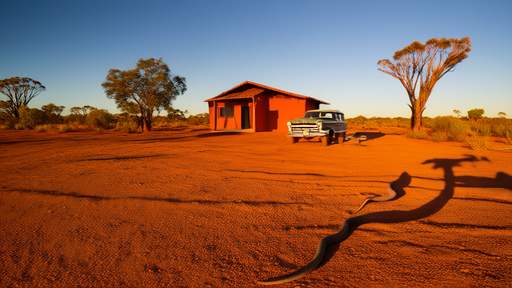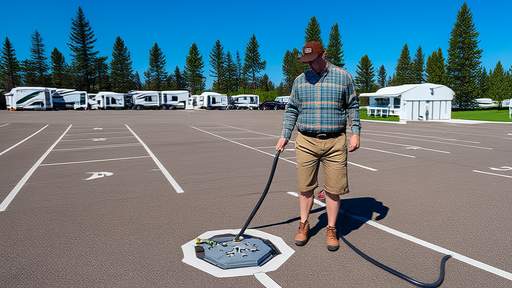Australia’s vast outback is home to some of the world’s most unique wildlife, including a variety of snakes—many of which are venomous. For travelers venturing into the heart of the country, staying at remote roadhouses or motels often means sharing the environment with these reptiles. While encounters are rare, understanding how to coexist safely is essential for both visitors and staff.
The Australian outback is not just a landscape of red dirt and endless horizons; it’s a thriving ecosystem where snakes play a crucial role. Species like the inland taipan, eastern brown snake, and mulga snake are often found in these regions. Unlike urban areas, where human activity pushes wildlife to the fringes, roadhouses and motels in the outback are built right in the middle of snake territory. This makes snake awareness not just a curiosity but a practical necessity.
One of the first things you’ll notice at many outback motels is the emphasis on keeping surroundings clear of debris. Fallen branches, piles of leaves, or unused equipment can become ideal hiding spots for snakes. Managers often enforce strict cleanliness protocols, ensuring that the area around guest rooms and common spaces remains uncluttered. It’s a simple but effective way to minimize unwanted encounters.
Lighting is another critical factor. Snakes are cold-blooded and often seek warmth, especially during cooler nights. Poorly lit pathways or porches can inadvertently become attractive spots for them to rest. Many motels now use motion-sensor lights or keep outdoor areas well-illuminated to discourage snakes from settling near high-traffic areas. Guests are usually advised to watch their step after dark, particularly in grassy or rocky sections of the property.
Staff training is a cornerstone of snake safety in these remote accommodations. Workers are typically educated on identifying local species, understanding their behavior, and knowing basic first aid for snakebites. Some motels even keep snakebite kits on hand, though they emphasize that prevention is always better than treatment. Guests are often briefed upon arrival about what to do—and what not to do—if they spot a snake.
Interestingly, many outback motels have adopted a live-and-let-live approach when it comes to non-venomous snakes. Removing them isn’t always the priority unless they pose an immediate threat. Some establishments even encourage guests to appreciate these creatures from a safe distance, fostering a deeper respect for the local wildlife. After all, snakes are a natural part of the outback’s charm, even if they aren’t the most welcoming hosts.
For travelers, a few simple habits can make all the difference. Keeping doors closed, shaking out shoes before putting them on, and avoiding walking through tall grass are small steps that significantly reduce risks. Most importantly, remaining calm during an encounter is key. Sudden movements or attempts to handle the snake are far more dangerous than the snake itself.
The outback’s rugged beauty comes with its own set of challenges, and snakes are just one of them. Yet, with the right precautions, staying at an inland motel doesn’t have to be a nerve-wracking experience. Instead, it can be an opportunity to witness Australia’s wild heart in all its untamed glory—reptiles included.

By /Jun 9, 2025

By /Jun 9, 2025

By /Jun 9, 2025

By /Jun 9, 2025

By /Jun 9, 2025

By /Jun 9, 2025

By /Jun 9, 2025

By /Jun 9, 2025

By /Jun 9, 2025

By /Jun 9, 2025

By /Jun 5, 2025

By /Jun 5, 2025

By /Jun 5, 2025

By /Jun 5, 2025

By /Jun 5, 2025

By /Jun 5, 2025

By /Jun 5, 2025

By /Jun 5, 2025

By /Jun 5, 2025